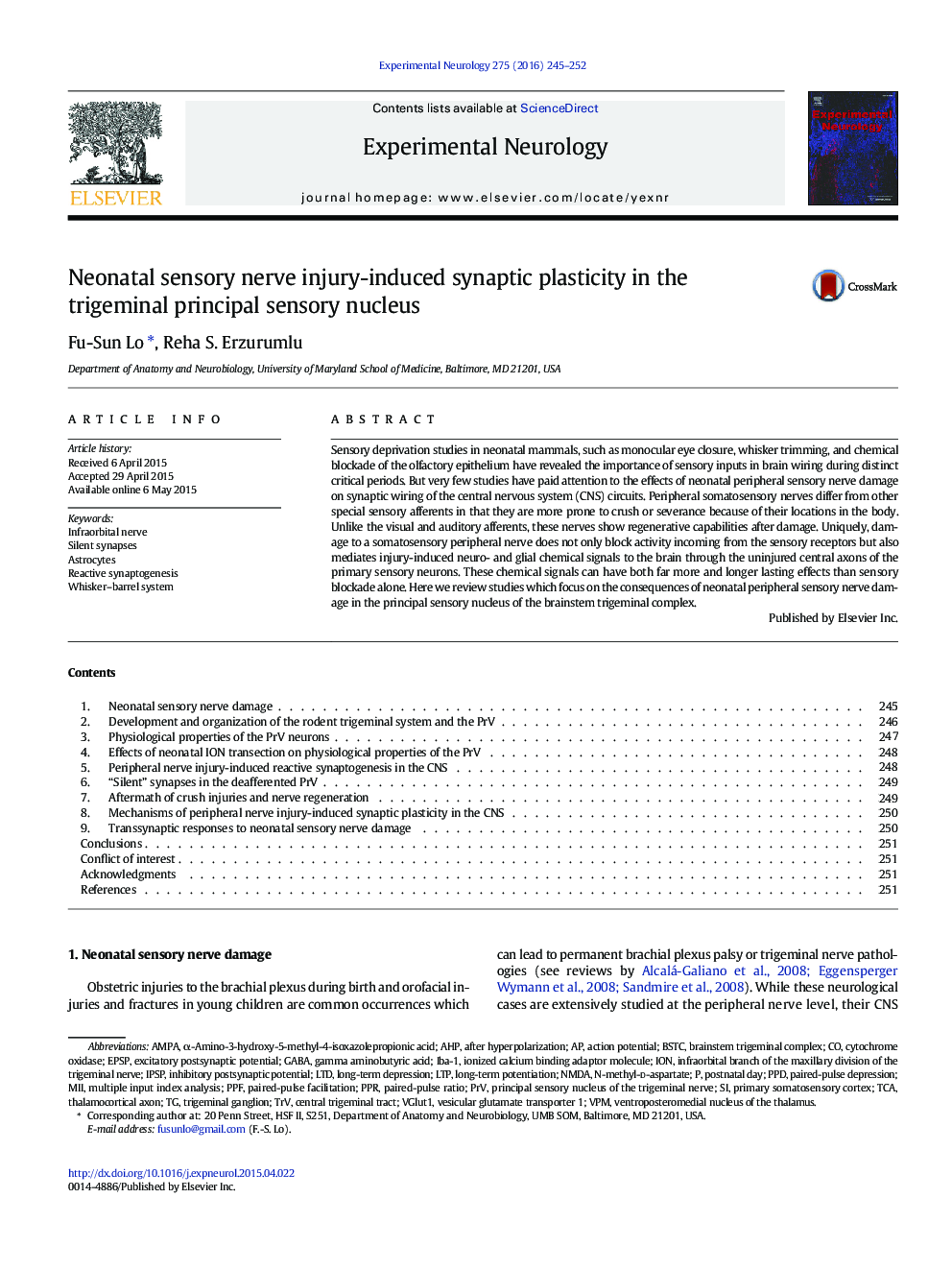| کد مقاله | کد نشریه | سال انتشار | مقاله انگلیسی | نسخه تمام متن |
|---|---|---|---|---|
| 6017424 | 1186485 | 2016 | 8 صفحه PDF | دانلود رایگان |
- Neonatal sensory nerve damage alters sensory maps in the CNS and results in substantial synaptic reorganization.
- In rats and mice, neonatal infraorbital nerve lesions lead to conversion of functional synapses to silent synapses.
- Sensory nerve damage causes convergence of multipletrigeminal afferents on single neurons in the trigeminal brainstem.
- Injury-induced synaptic plasticity does not follow the timing ofthe critical period for structural plasticity.
- Effects of neonatal sensory nerve transection and crushare quite different in the CNS.
Sensory deprivation studies in neonatal mammals, such as monocular eye closure, whisker trimming, and chemical blockade of the olfactory epithelium have revealed the importance of sensory inputs in brain wiring during distinct critical periods. But very few studies have paid attention to the effects of neonatal peripheral sensory nerve damage on synaptic wiring of the central nervous system (CNS) circuits. Peripheral somatosensory nerves differ from other special sensory afferents in that they are more prone to crush or severance because of their locations in the body. Unlike the visual and auditory afferents, these nerves show regenerative capabilities after damage. Uniquely, damage to a somatosensory peripheral nerve does not only block activity incoming from the sensory receptors but also mediates injury-induced neuro- and glial chemical signals to the brain through the uninjured central axons of the primary sensory neurons. These chemical signals can have both far more and longer lasting effects than sensory blockade alone. Here we review studies which focus on the consequences of neonatal peripheral sensory nerve damage in the principal sensory nucleus of the brainstem trigeminal complex.
Journal: Experimental Neurology - Volume 275, Part 2, January 2016, Pages 245-252
